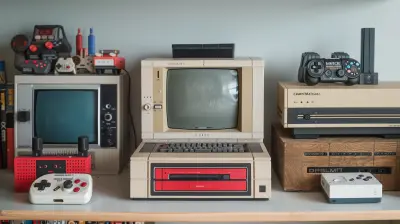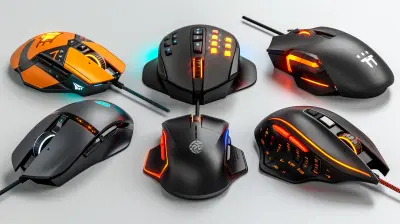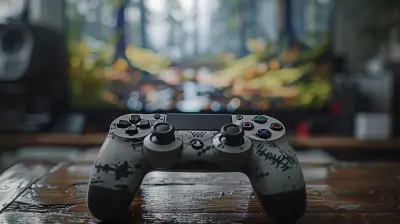Hands-On Review: The Fastest Gaming Monitors for Competitive Play
31 May 2025
When it comes to competitive gaming, every millisecond counts. Whether you're lining up that perfect headshot in an FPS or trying to outmaneuver your opponent in a high-stakes MOBA, the right monitor can make or break your performance. Gone are the days when a standard 60Hz display could cut it. Competitive gamers are now all about lightning-fast refresh rates, ultra-low response times, and buttery-smooth visuals.
So, what are the fastest gaming monitors available today, and are they worth the hype? Today, I’ll dive headfirst into the top contenders and break down what makes these monitors stand out. Buckle up—this is going to be smooth (like 360Hz-smooth)!
Why Monitor Speed Matters in Competitive Gaming
Let’s start with the basics: why obsess over monitor speed? It’s simple. In fast-paced games, the faster your monitor can refresh and display new data, the better your chances are of reacting before your opponent does. Think of it like a relay race: if your monitor's refresh rate lags behind, it's like tripping over your own shoelaces.- Refresh Rate: Measured in Hertz (Hz), this tells you how many times the screen refreshes per second. Higher refresh rates (like 144Hz, 240Hz, or even 360Hz) mean smoother gameplay and less motion blur.
- Response Time: This is how quickly a pixel can change colors. Low response times (measured in milliseconds) reduce ghosting, making fast-moving objects crisper.
Still not convinced? Many pro players rely on these faster monitors to gain tiny, split-second advantages that can be the difference between winning and losing.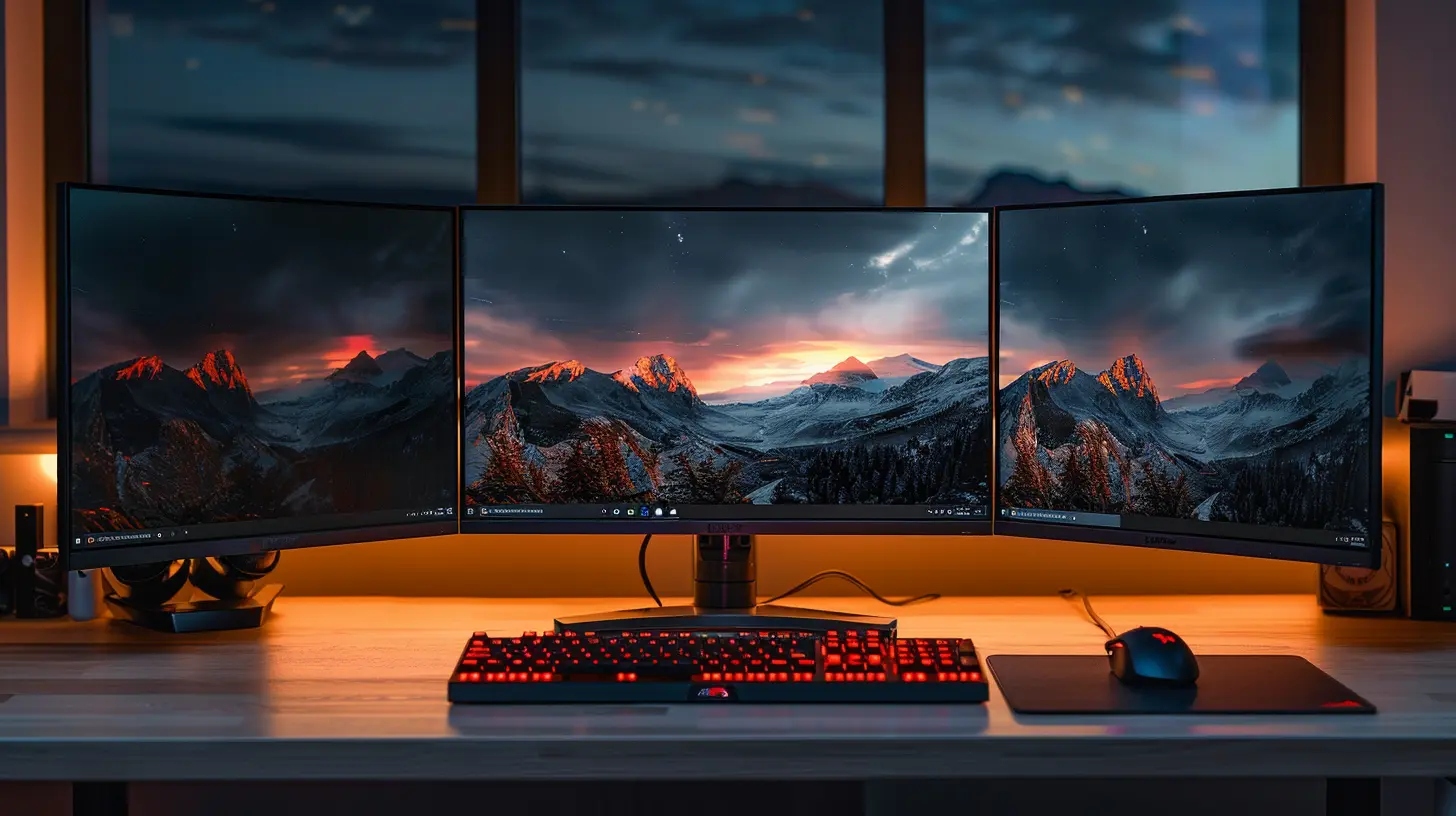
What to Look for in a Fast Gaming Monitor
Before we dive into specific models, let’s cover the key features you should be looking out for:1. Refresh Rate: Aim for 144Hz or higher. While 240Hz and even 360Hz may not feel "necessary" to casual gamers, they’re almost a must for competitive settings like esports tournaments.
2. Response Time: Stick to 1ms or less, especially if you’re playing competitive shooters.
3. Panel Type: TN panels are the fastest, but IPS panels now offer near-equal speed with far better color accuracy and viewing angles.
4. Adaptive Sync: Monitors with G-Sync or FreeSync minimize screen tearing and stuttering.
5. Resolution: Though 1080p is still king for competitive play due to higher frame rates, some gamers prefer 1440p for a sharper image. Just know that higher resolutions can be more taxing on your GPU. 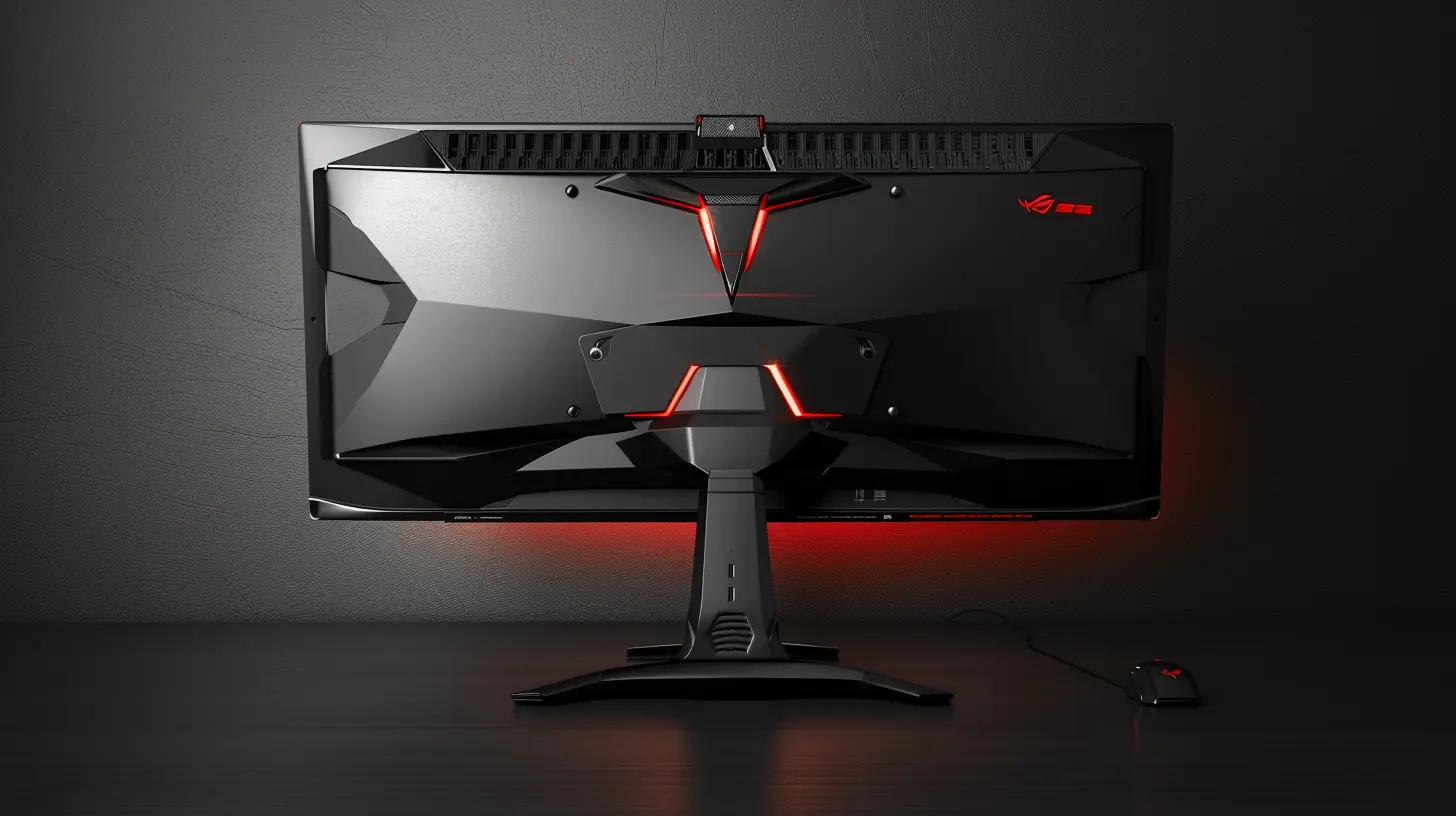
The Fastest Gaming Monitors for Competitive Play
Here’s the part you’ve been waiting for. Let’s take a closer look at some of the best (and fastest!) gaming monitors on the market right now.1. ASUS ROG Swift 360Hz PG259QN
If you’re chasing ultimate performance, the ASUS ROG Swift PG259QN is an absolute monster. This beast packs a jaw-dropping 360Hz refresh rate, making it one of the fastest monitors on the planet.- Key Specs:
- Screen Size: 24.5 inches
- Resolution: 1080p (Full HD)
- Panel Type: IPS
- Response Time: 1ms
- G-Sync Compatible
What makes it special? The IPS panel ensures vibrant colors without sacrificing speed, and the 24.5-inch size pairs perfectly with the 1080p resolution for crisp visuals. If you’re a die-hard esports player, this monitor will feel like a supercharged sports car.
Downside? It's pricey. Plus, unless your gaming rig can consistently push 360 FPS, you might not get the full benefit.
2. Alienware AW2521H
Alienware knows how to deliver premium gaming hardware, and the AW2521H is no exception. This 25-inch display offers a slick 360Hz refresh rate with G-Sync support, ensuring a tear-free experience even during intense firefights.- Key Specs:
- Screen Size: 25 inches
- Resolution: 1080p (Full HD)
- Panel Type: IPS
- Response Time: 1ms
- G-Sync Ultimate
This monitor shines when it comes to build quality and aesthetics. Alienware’s sleek, futuristic design pairs well with its top-tier performance—like owning the Lamborghini of gaming monitors.
On the downside, it's another expensive option, and its 1080p resolution might feel limiting if you're upgrading from a higher-resolution display.
3. BenQ Zowie XL2546K
If you’re serious about FPS games (think CS:GO, Valorant, or Call of Duty), the BenQ Zowie XL2546K is practically built for you. With its 240Hz refresh rate and a TN panel, this monitor prioritizes speed over everything.- Key Specs:
- Screen Size: 24.5 inches
- Resolution: 1080p
- Panel Type: TN
- Response Time: 0.5ms (yes, you read that right!)
What sets it apart is BenQ’s exclusive DyAc+ technology, which reduces motion blur like a champ, making it easier to track enemies on the move.
Some may argue that TN panels are outdated due to their mediocre color reproduction compared to IPS, but if performance is your main focus, the XL2546K delivers like a seasoned pro.
4. Samsung Odyssey G7 (27-Inch)
Don’t want to sacrifice resolution for speed? Enter the Samsung Odyssey G7, a 1440p monitor with a blazing 240Hz refresh rate.- Key Specs:
- Screen Size: 27 inches
- Resolution: 1440p (QHD)
- Panel Type: VA
- Response Time: 1ms
- FreeSync and G-Sync Compatible
Its curved design creates an immersive experience, and the VA panel delivers deeper blacks and better contrast than its IPS and TN cousins. It’s the perfect middle ground if you want fast response times without giving up visual fidelity.
Downsides? VA panels, while great for visuals, can struggle with motion blur compared to other panel types. But for most gamers, the difference is negligible.
5. Acer Nitro XV272U
For gamers craving a balance between speed, resolution, and price, the Acer Nitro XV272U hits the sweet spot. Sporting a 1440p resolution, 144Hz refresh rate, and 1ms response time, this monitor is a solid all-rounder.- Key Specs:
- Screen Size: 27 inches
- Resolution: 1440p (QHD)
- Panel Type: IPS
- Response Time: 1ms
- FreeSync and G-Sync Compatible
While it doesn’t hit the insane speeds of 240Hz or 360Hz monitors, the XV272U is more than capable of handling competitive games. Plus, it won’t completely empty your wallet, making it a great option for budget-conscious players.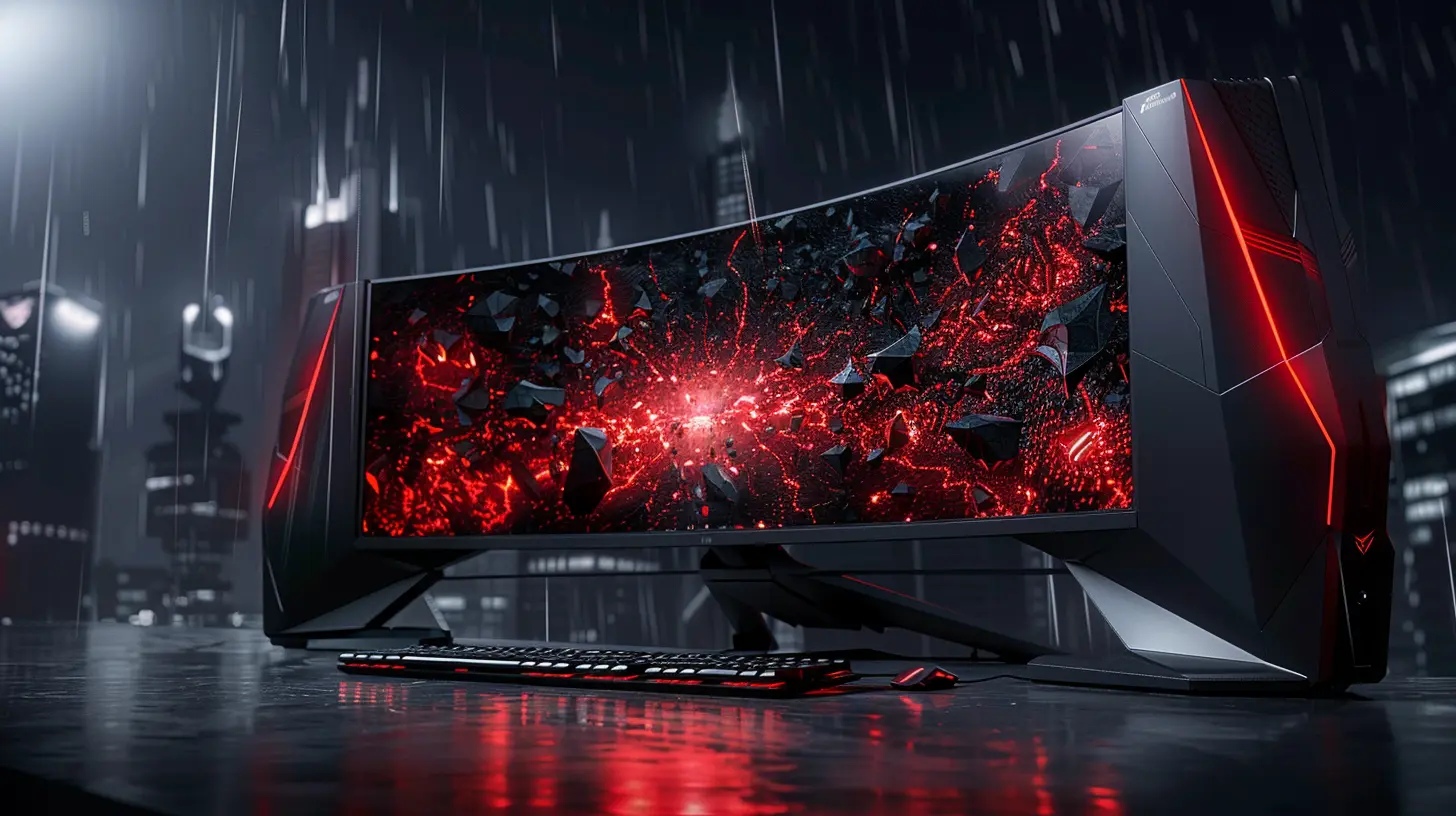
Do You Really Need a 360Hz Monitor?
Let’s get real for a second. Do you need to upgrade to a 360Hz monitor if you already have a 144Hz or 240Hz setup? Honestly, it depends on what kind of gamer you are.If you’re a professional or aspiring competitive gamer, every split-second advantage counts, so yes, it’s worth it. But for casual players or single-player fans, you might not notice much of a difference beyond 240Hz. It’s kind of like owning a Ferrari—you won’t get the most out of it unless you’re on a racetrack (or in this case, playing competitive esports titles).
Final Thoughts
Choosing the fastest gaming monitor for competitive play isn’t just about raw specs—it’s about finding the right balance that works for your personal gaming habits and setup. Whether you’re gunning for the lightning-quick ASUS ROG Swift 360Hz or the immersive Samsung Odyssey G7, the key is to prioritize what really matters to you: speed, resolution, or a bit of both.Remember, even the fastest monitor won’t make up for slow reflexes or poor aim, so keep practicing!
all images in this post were generated using AI tools
Category:
Hardware ReviewsAuthor:

Pascal Jennings
Discussion
rate this article
3 comments
Enid Foster
Unleash your potential with these blazing-fast monitors! Elevate your gaming experience and dominate the competition like never before. Game on!
June 11, 2025 at 2:42 AM

Pascal Jennings
Absolutely! These monitors truly elevate gameplay and give gamers the edge they need to compete at the highest level. Game on!
Valen Harmon
Speed is the game’s heartbeat, but what secrets lie hidden within these monitors? Are they merely tools, or do they hold the key to unlocking unparalleled competitive potential? Dare to explore.
June 6, 2025 at 3:00 PM

Pascal Jennings
Great observation! These monitors are more than just tools; they can significantly enhance gameplay and reveal strategies that can give players a competitive edge. Exploring their features is essential for any serious gamer.
Colton Robinson
Speed and precision are key; great monitors elevate competitive gaming to new heights.
June 5, 2025 at 4:36 AM

Pascal Jennings
Thank you! Absolutely, the right monitor can significantly enhance both speed and precision in competitive gaming.
